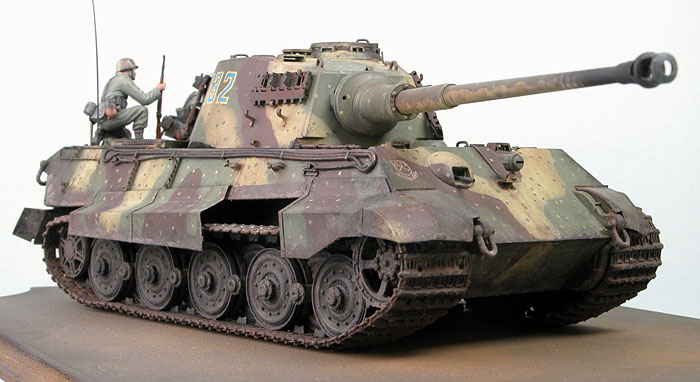This is another one of those questions with an uncertain answer - in fact some King Tigers had hard edged patterns and some had soft edged so either one is probably OK. The reason for this is field sprayed or field brushed vs factory sprayed at different time periods vs. when King Tigers were being produced.
Standard practice from February, 1943 until late August, 1944 was to spray paint the disruptive colours over the factory applied base coat in the field which resulted in soft edged camouflage. If no spray equipment was available, the disruptive colours were field applied using a brush giving a hard edge.
The disruptive pattern was introduced in mid-August 1944 ( Dunkelgelb base and Olivgrün and Schokoladenbraun disruptive colours plus dots) so some King Tigers were field painted with the disruptive colours and dots for a few weeks. After August, 1944, camouflage was applied at the factory, and hard edges were supposed to be standard, though some factories ignored this. Approximately 379 King Tigers were produced in 1944, so some were field painted with soft edges and sometimes with hard edges, and the later ones were factory painted with the ambush pattern had mostly hard edges but some had soft edges.
This disruptive pattern was replaced in November 1944 with Dark Red Primer factory base coat and some combination of Dunkelgelb, Olivgrün, Schwartzgrau disruptive pattern.
It seems the definitive ambush pattern was factory applied for only a few months August - October 1944 and most had soft edges.
Terry



